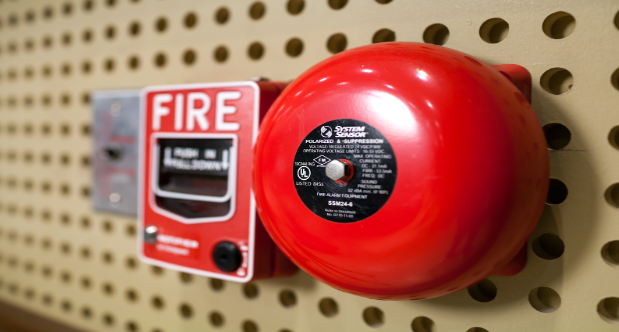
Fire alarms are crucial devices designed to detect and alert individuals to the presence of smoke or fire in a building. Understanding how fire alarms work is essential for ensuring the safety of occupants and property. In this blog post, we’ll delve into the basics of fire alarms, their components, and how they function to protect lives and property. For those looking to install or upgrade their fire alarm systems in London, seeking professional Fire Alarm Installers in London can ensure proper installation and compliance with local regulations, enhancing overall safety measures.
Types of Fire Alarms
Fire alarms generally fall into two main categories: ionization and photoelectric smoke alarms.
- Ionization Smoke Alarms: These alarms contain a small amount of radioactive material between two electrically charged plates. When smoke enters the chamber, it disrupts the flow of ions, triggering the alarm.
- Photoelectric Smoke Alarms: These alarms use a light beam and a sensor. Smoke particles entering the chamber scatter the light, which then triggers the alarm.
Components of a Fire Alarm System
A typical fire alarm system consists of several key components:
- Smoke Detectors: These are the devices that detect smoke or fire. They can be ionization, photoelectric, or a combination of both types.
- Control Panel: The control panel is the brain of the fire alarm system. It receives signals from smoke detectors and triggers alarms, such as sounders or bells, in case of detection.
- Alarms (Sounders/Bells): These are the devices that produce the audible alert when smoke or fire is detected. They are designed to be loud and distinct to ensure they are heard throughout the building.
- Power Supply: Fire alarm systems typically have backup power supplies, such as batteries or generators, to ensure they remain operational during power outages.
How Fire Alarms Detect Smoke and Fire
- Detection Process: When smoke particles enter the sensing chamber of a smoke detector, they disrupt the normal operation of the detector. This disturbance triggers the alarm to activate.
- Alarm Activation: Once smoke is detected, the smoke detector sends a signal to the control panel. The control panel then activates the alarms (sounders or bells) to alert occupants of the building.
Installation and Maintenance
- Installation: Proper installation of fire alarms is crucial for their effectiveness. They should be installed in every room of a building, especially bedrooms and common areas.
- Maintenance: Regular maintenance and testing of fire alarms are essential to ensure they are in working order. This includes checking batteries, cleaning detectors, and conducting periodic inspections as per local regulations.
Importance of Fire Alarms
Fire alarms play a critical role in fire safety for several reasons:
- Early Detection: They detect fires at their earliest stages, giving occupants more time to evacuate safely.
- Notification: Fire alarms provide immediate and loud notification to occupants, even when they are sleeping or in other parts of the building.
- Compliance: Many building codes and regulations mandate the installation of fire alarm systems to ensure the safety of occupants.
Conclusion
Understanding the basics of how fire alarms work is fundamental to ensuring the safety of any building. From the types of alarms to their components and detection processes, each aspect plays a crucial role in protecting lives and property from the devastating effects of fire. Regular maintenance and adherence to safety standards are key to maximizing the effectiveness of fire alarm systems. By investing in proper installation and maintenance, individuals and organizations can significantly enhance their fire safety preparedness and minimize risks in the event of a fire emergency. For property owners seeking assurance that their fire safety measures meet regulatory standards, obtaining a Landlord Certification can provide the necessary validation ,If you want to stay updated with posts like this, please follow us on DEEPCYCLENEWS.





